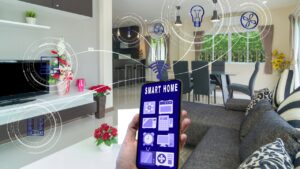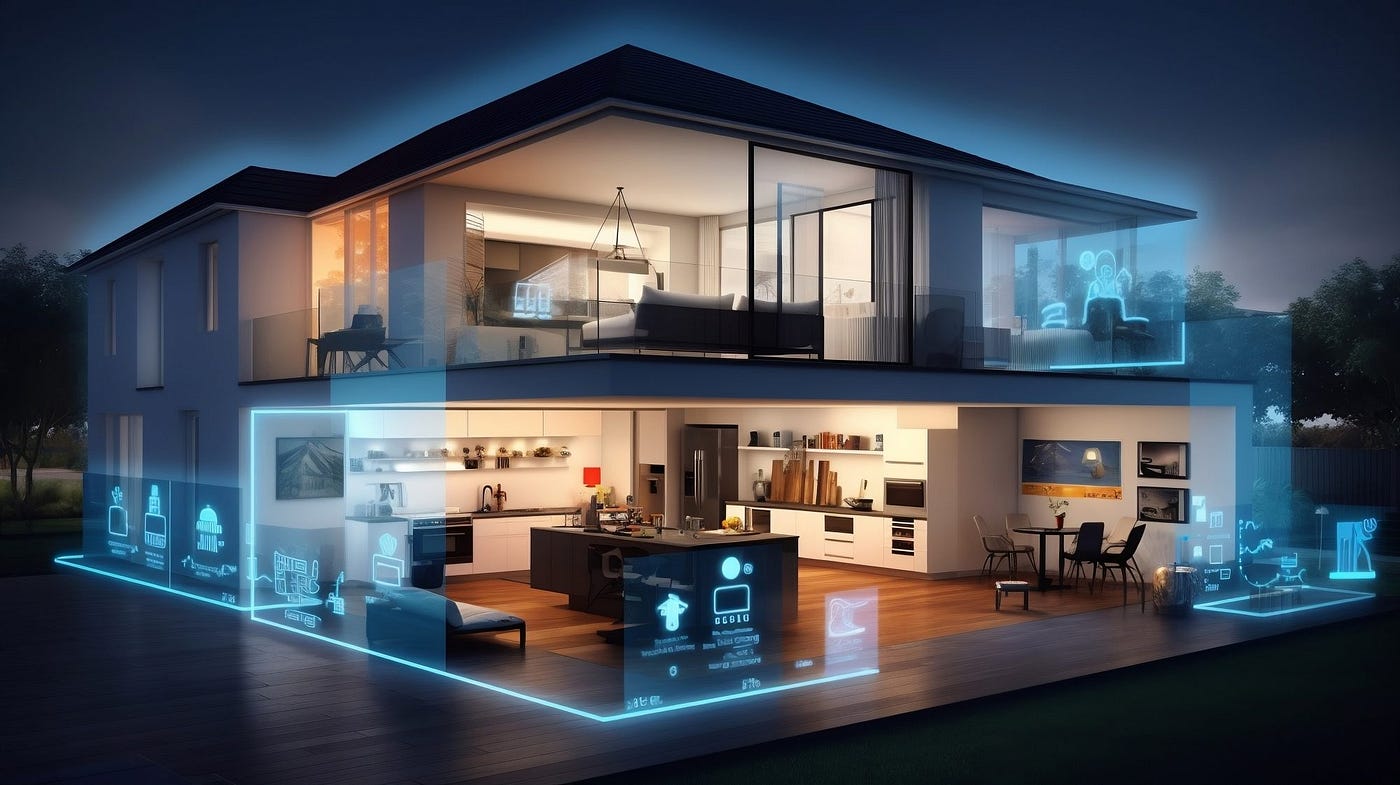Living Embracing the Future of Smart Homes and Communities
In today’s fast-paced world, the concept of “connected living” has emerged as a transformative force, reshaping how we interact with our homes, communities, and the environment. Connected living is more than just a buzzword—it’s a lifestyle enabled by the seamless integration of technology, sustainability, and community-focused design. From smart homes powered by the Internet of Things (IoT) to eco-conscious urban planning, connected living is about creating environments that are intelligent, efficient, and human-centric. In this article, we’ll explore what connected living means, its key components, benefits, challenges, and how it’s shaping the future.
What is Connected Living?
Connected living refers to a lifestyle where technology, particularly IoT, integrates physical spaces—homes, offices, and cities—with digital systems to enhance convenience, efficiency, and sustainability. At its core, it’s about creating ecosystems where devices, people, and environments communicate effortlessly to improve quality of life. Imagine waking up to a home that adjusts the thermostat to your preferred temperature, brews your coffee before you step into the kitchen, and alerts you to traffic conditions for your morning commute—all without you lifting a finger. This is the essence of connected living.
The concept extends beyond individual homes to entire communities. Smart cities, for instance, leverage connected technologies to optimize traffic flow, reduce energy consumption, and enhance public safety. By fostering interoperability between devices and systems, connected living creates a cohesive, responsive environment that adapts to the needs of its inhabitants.
The Pillars of Connected Living
Connected living rests on several foundational pillars that make it possible. These include:
- Internet of Things (IoT): IoT is the backbone of connected living, enabling devices to communicate with each other via the internet. Smart thermostats, lighting systems, and appliances all rely on IoT to function seamlessly.
- Smart Home Technology: From voice-activated assistants like Amazon’s Alexa to automated security systems, smart home devices are central to connected living. They allow users to control their environment remotely and automate routine tasks.
- Sustainability: Connected living emphasizes eco-friendly practices, such as energy-efficient appliances and renewable energy integration, to reduce environmental impact.
- Community Connectivity: Beyond individual homes, connected living extends to neighborhoods and cities, fostering collaboration through shared resources, smart infrastructure, and community apps.
- Data and Analytics: The ability to collect, analyze, and act on data is crucial. Smart systems use data to optimize performance, predict needs, and enhance user experiences.
The Benefits of Connected Living
The adoption of connected living offers a multitude of benefits, transforming how we live, work, and interact. Here are some of the key advantages:
1. Enhanced Convenience
One of the most immediate benefits of connected living is convenience. Smart home devices allow users to control lighting, heating, and appliances remotely via smartphones or voice commands. For example, you can turn on your air conditioner from your office, ensuring your home is cool when you arrive. Automation also eliminates repetitive tasks—your robot vacuum can clean your floors while you’re away, and your smart fridge can notify you when you’re low on groceries.
2. Energy Efficiency and Cost Savings
Connected living promotes sustainability by optimizing energy usage. Smart thermostats, like the Nest, learn your habits and adjust heating or cooling to save energy when you’re not home. Similarly, smart lighting systems can dim or turn off lights automatically, reducing electricity bills. According to studies, smart homes can reduce energy consumption by up to 30%, translating to significant cost savings over time.
3. Improved Security
Security is a top priority for homeowners, and connected living delivers advanced solutions. Smart security systems, equipped with cameras, motion sensors, and remote monitoring, allow you to keep an eye on your property from anywhere in the world. Features like facial recognition and real-time alerts enhance safety, while integration with smart locks ensures only authorized individuals can enter your home.
4. Community Engagement
Connected living extends beyond the home to foster stronger community ties. Smart neighborhood apps enable residents to share resources, organize events, or report issues like potholes directly to local authorities. In smart cities, connected infrastructure—such as traffic lights that adjust to real-time traffic patterns—improves urban living for everyone.
5. Health and Wellness
Connected living also supports healthier lifestyles. Wearable devices, like fitness trackers, sync with smart home systems to monitor sleep patterns, encourage physical activity, and even remind you to stay hydrated. Some smart homes integrate air purifiers and water filtration systems that adapt to environmental conditions, ensuring a healthier living space.
Challenges of Connected Living
While the benefits are compelling, connected living is not without its challenges. Addressing these hurdles is essential for widespread adoption and long-term success.
1. Privacy and Security Concerns
With increased connectivity comes the risk of data breaches. Smart devices collect vast amounts of personal data, from your daily routines to your location. If not properly secured, this data could be vulnerable to hackers. Manufacturers must prioritize robust encryption and regular software updates to protect users.
2. Interoperability Issues
Not all smart devices speak the same language. Different brands use proprietary protocols, which can make it difficult for devices to communicate. For example, a smart light bulb from one manufacturer may not work seamlessly with a hub from another. Industry standards like Matter are emerging to address this, but compatibility remains a challenge.
3. High Initial Costs
Setting up a smart home or community can be expensive. While prices for smart devices have decreased over time, outfitting an entire home with IoT-enabled appliances, sensors, and hubs requires a significant investment. For many, the cost may outweigh the immediate benefits.
4. Digital Divide
Connected living relies on access to high-speed internet and modern technology, which isn’t universally available. Rural areas and low-income communities may struggle to adopt these technologies, exacerbating the digital divide. Governments and organizations must work to ensure equitable access to connected living solutions.
The Role of Sustainability in Connected Living
Sustainability is a cornerstone of connected living, aligning with global efforts to combat climate change. Smart homes and cities are designed to minimize waste and maximize efficiency. For instance, smart grids distribute electricity more effectively, reducing reliance on fossil fuels. Solar panels integrated with smart home systems can store excess energy for later use, while water-saving devices monitor and reduce consumption.
At the community level, connected living supports urban farming initiatives and shared mobility solutions, such as electric bike-sharing programs. These efforts reduce carbon footprints and promote greener lifestyles. By leveraging data, connected systems can also predict and mitigate environmental challenges, such as optimizing waste collection to reduce landfill use.
Connected Living in Smart Cities
Smart cities take connected living to the next level by integrating technology across urban infrastructure. Cities like Singapore and Copenhagen are leading the way, using IoT to manage traffic, reduce energy consumption, and improve public services. For example, smart traffic lights adjust in real-time to reduce congestion, while connected waste bins alert authorities when they’re full, streamlining collection routes.
Public safety is another area where smart cities shine. Connected surveillance systems use AI to detect suspicious activity, while emergency response systems leverage real-time data to deploy resources efficiently. These advancements make cities safer, more efficient, and more livable.
The Future of Connected Living
As technology evolves, so too will connected living. Emerging trends like 5G, artificial intelligence (AI), and edge computing will enhance the capabilities of smart homes and cities. 5G’s ultra-fast speeds will enable real-time communication between devices, while AI will make systems smarter and more intuitive. Edge computing, which processes data closer to its source, will reduce latency and improve efficiency.
In the coming years, we can expect greater integration of augmented reality (AR) and virtual reality (VR) into connected living. Imagine using AR glasses to control your smart home or attending a virtual community meeting from your living room. These innovations will make connected living even more immersive and interactive.
Moreover, the focus on sustainability will intensify. Governments and companies are investing in green technologies, from carbon-neutral buildings to electric vehicle infrastructure. Connected living will play a pivotal role in achieving global sustainability goals, such as those outlined in the Paris Agreement.
How to Embrace Connected Living Today
Ready to dive into connected living? Here are some practical steps to get started:
- Start Small: Begin with affordable smart devices, like a smart bulb or plug, to test the waters.
- Choose Compatible Devices: Opt for devices that support universal standards like Matter to ensure interoperability.
- Prioritize Security: Use strong passwords, enable two-factor authentication, and keep devices updated.
- Explore Community Solutions: Check if your neighborhood offers smart apps or services, such as waste management or carpooling platforms.
- Focus on Sustainability: Invest in energy-efficient devices and consider renewable energy options like solar panels.
Conclusion
Connected living is more than a technological trend—it’s a vision for a smarter, more sustainable, and more connected future. By integrating IoT, smart home technologies, and community-focused solutions, we can create environments that enhance convenience, promote sustainability, and foster stronger human connections. While challenges like privacy and cost remain, the potential of connected living to transform our lives is undeniable. As we move toward a more interconnected world, embracing these technologies today will pave the way for a brighter, more efficient tomorrow.
Whether you’re upgrading your home with smart devices or advocating for smarter cities, connected living offers endless possibilities to live better, greener, and more in tune with the world around you.






